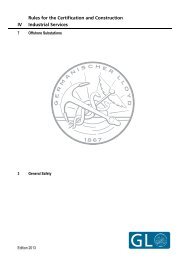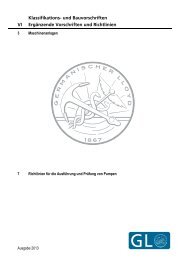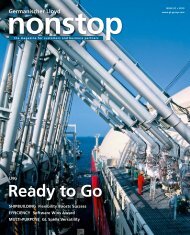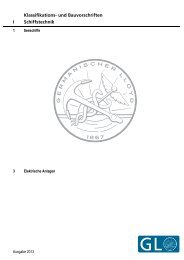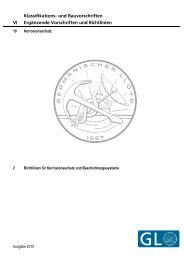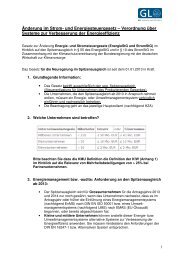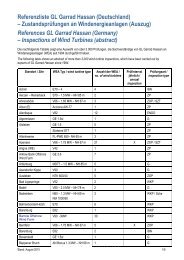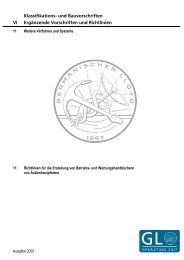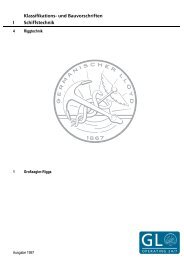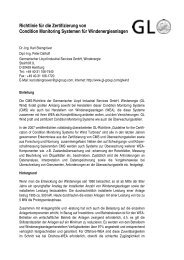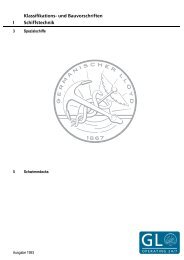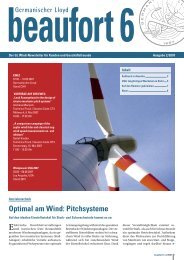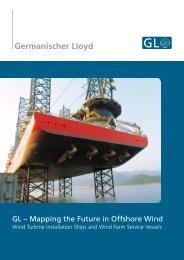energize oil & gas – issue 01-2013 - GL Group
energize oil & gas – issue 01-2013 - GL Group
energize oil & gas – issue 01-2013 - GL Group
You also want an ePaper? Increase the reach of your titles
YUMPU automatically turns print PDFs into web optimized ePapers that Google loves.
integrity composite repairs<br />
methods, suggesting that the circumferential yield<br />
strength of the repair material is the property dominating<br />
the behaviour. Therefore the different materials are not distinguished<br />
in the results presented below.<br />
Figure 6. Example of failure predicted for<br />
a repaired bend (900 NB bend first predicts<br />
failure at bend/pipe transition).<br />
LPF ( = applied pressure in MPa)<br />
LPF / failure pressure (MPa)<br />
50<br />
40<br />
30<br />
20<br />
10<br />
50<br />
45<br />
40<br />
35<br />
30<br />
25<br />
20<br />
15<br />
10<br />
5<br />
0<br />
Limit pressures for repaired bends<br />
600 NB thin<br />
300 NB<br />
1,200 NB<br />
900 NB<br />
600 NB<br />
300 NB<br />
150 NB<br />
50 NB<br />
0.0 0.5 1.0 1.5 2.0 2.5 3.0<br />
Displacement (mm)<br />
Figure 7. Predicted failure pressures for<br />
repaired bends.<br />
LPF unrepaired<br />
LPF repaired<br />
P f<br />
Pmin<br />
undamaged 150 NB<br />
undamaged 600 NB<br />
0<br />
0.05 0.07 0.09 0.11 0.13 0.15<br />
D/(TSy)<br />
Figure 8. Predicted failure pressures from<br />
FEA compared with ISO 24817 spool survival<br />
test pressure (P f ) and Pmin, based on von<br />
Mises’ yield criterion and thick-wall theory.<br />
Discussion<br />
The truncation of the LPF plots in Figure 7 was determined<br />
to be a result of the conservative assumption that the material<br />
model used was elastic-perfectly plastic.<br />
For each geometry, the failure pressure for the repaired<br />
bend is predicted to be higher than the calculated pressure<br />
required for the short-term spool survival test to be classed<br />
as successful. This is illustrated in Figure 8, which shows the<br />
predicted failure pressure for each model against the factor<br />
(D/TSy), compared with the ISO 24817 test pressure P f .<br />
This was considered further, and two major factors contribute<br />
to the difference between the predicted LPF and the<br />
short-term survival test pressure redefining P f :<br />
P f is based on thin-wall shell theory. This assumption is<br />
not valid for use on all the D/T ratios in the FEA.<br />
P f is based on the hoop stress reaching yield strength,<br />
whereas the von Mises yield criterion is used in the Riks<br />
analysis to determine the LPF.<br />
The pipe will be capped at both ends during the test and<br />
therefore will be subject to an axial stress due to internal<br />
pressure, in addition to the hoop stress. Calculation of the<br />
failure pressure based on von Mises stresses will therefore<br />
be more representative.<br />
If both of these factors are taken into account, then<br />
the failure pressure (Pmin) is calculated based on the von<br />
Mises equivalent stress reaching the SMYS and using thick-<br />
40 energıze



